- Home
- S. Hussain Zaidi
Dawood's Mentor
Dawood's Mentor Read online
S. HUSSAIN ZAIDI
DAWOOD’S MENTOR
The Man Who Made India’s Biggest Don
PENGUIN BOOKS
Contents
About the Author
List of Acronyms
1. The Pathan Threat
2. Reel vs Real
3. The Fall of Sabir
4. The First Lead
5. The Dubai Rendezvous
6. The Legend of Pathans
7. The Challenger
8. The Protégé
9. Khalid: Bashu’s Acolyte
10. Dangerous Man, Dangerous Mind
11. The Galadari Touch
12. Forging a Bond
13. Survival Techniques
14. The Mafia in the 1970s
15. The Bashu–Khalid Split
16. The Art of Smuggling
17. Dawood’s Overtures
18. The Five-Man Army
19. An Undercover Wedding
20. The D-Gang
21. Musa Ka Ghoosa
22. The Gold ‘Wave’
23. An Amicable Parting
24. ‘Never Get Caught’
25. Deception Point
26. The End of the Line
Illustrations
Footnote
4. The First Lead
List of Sources
Acknowledgements
Follow Penguin
Copyright
About the Author
S. Hussain Zaidi is India’s number-one crime writer. He is a veteran of investigative, crime and terror reporting. He is the author of several bestselling books, including Dangerous Minds, Dongri to Dubai: Six Decades of the Mumbai Mafia, My Name Is Abu Salem and Black Friday. He has worked for the Asian Age, Mumbai Mirror, Mid-Day and the Indian Express. He is also the associate producer for the HBO movie Terror in Mumbai, based on the 26/11 terror strikes. He lives with his family in Mumbai.
With love,
For Rayyan Shabeeb Rizvi
List of Acronyms
ACP Assistant commissioner of police
CID Criminal Investigation Department
COFEPOSA Conservation of Foreign Exchange and Prevention of Smuggling Activities Act
DCP Deputy commissioner of police
DRI Directorate of Revenue Intelligence
FIR First Information Report
IPC Indian Penal Code
IPS Indian Police Service
MHADA Maharashtra Housing and Area Development Authority
MISA Maintenance of Internal Security Act
NSA National Security Act
ROI Return on Investment
RSP Road Safety Patrol
SLR Self-Loading Rifle
UAE United Arab Emirates
USD United States Dollar
1
The Pathan Threat
The barrel of the gun was pointed at Dawood Ibrahim’s heart. The gunman had been training his focus for a long time. He was waiting for the right moment to pull the trigger. The gunman had only one chance. If the bullet missed the target, the man at the other end would certainly gift him a not-so-exquisite death.
The man pointing the muzzle at Dawood had been sent by his arch-rivals from the underworld. The gunman was accompanied by his cronies, who were huge, hefty men called the Pathans, with Peshawari and Afghan ancestry. Since the 1950s, the Pathans, known for their moneylending habits, had taken to crime. Cousins Amirzada and Alamzeb wanted Dawood dead. The man was a menace. An audacious chit of a boy, he challenged the Pathan hegemony, and since the time he had emerged in the area as a small-time criminal, was proving to be a headache for the Pathans.
In the 1970s, the turf war among the mob generally ended with some serious skirmishes. But the Pathans were so furious with the tenacious Dawood Ibrahim that they decided to investigate his sources of power. They found a nexus between local newspaper-owner and crime reporter Iqbal Natiq and Dawood. The two shared an amazing rapport, with Dawood invariably spending a couple of hours every day at Natiq’s office in BIT Blocks in Dongri. And Natiq’s newspaper—Raazdaar (The Confidante)—exposed the Pathans often, which brought the police to their doorstep.
As retribution, the Pathans killed Natiq brutally. Dawood and his brother Sabir Kaskar swore revenge. Their first target was Saeed Batla. They did not kill Batla, preferring, instead, to maim him and amputate his fingers, something unheard of in the Indian underworld in those times. Before they could proceed with such ‘special treatment’ for the other Pathans, the police picked them up. However, the Kaskar brothers managed to secure bail on attempt-to-murder charges.
Upon receiving bail, as is routine in any police prosecution case, Sabir and Dawood were supposed to intermittently present themselves at the Nagpada police station in central Bombay (now Mumbai). They had to assure the cops that they were not up to any mischief and that they were miles away from any criminal activities. The slang for these routine police-station visits is haazari lagana (marking one’s attendance), where the accused meet the police inspector, answer a few questions and leave within a few minutes.
Dawood preferred the formality of the official haazari to the cold walls of the prison and, of course, it helped that these visits ensured that the police did not land up at their house and complain to their father, Ibrahim Kaskar, who was also a cop. Kaskar senior was an absolute disciplinarian who was known to reserve his leather-belt treatment for the unbridled Dawood, his third child.
On that cool afternoon in October 1980, a defenceless Dawood, along with Sabir, was the target. The Pathans—Amirzada and Alamzeb—knew that Dawood would not be carrying any weapons to the police station. They decided to take advantage of this particular visit to finish off Dawood, because under no other circumstances would they find him unarmed.
But what they did not see coming was another Pathan, Khalid Khan, who shepherded Dawood to the police station that day. Built like a mountain, with a towering height of 6 feet 2 inches and a brawny physique, Khalid was very attached to the promising young Dawood.
Earlier, Khalid had cut his teeth in crime with another don, a local strongman by the name of Bashu Dada. But that was long before Dawood endeared himself to him. Khalid was very protective of Dawood, and that particular day his instincts told him that Dawood would be vulnerable and in a tight spot around the police station. He rationalized that since Nagpada was closer to Kamathipura and Tardeo, the stronghold of the Pathans, they might make a play for Dawood.
Khalid cancelled all his engagements scheduled for that day and decided to follow Dawood to the police station. He also decided to escort him back to his headquarters at Musafir Khana, safe and unharmed. Since Khalid’s name was not in the First Information Report (FIR), he could safely accompany Dawood and also carry a weapon on the sly. The cops would not frisk him for weapons, he surmised.
After Dawood and Sabir signed their attendance and completed other formalities, they saluted the cops—there was a lot of respect for the uniform; it came from their father—and were on their way towards the exit.
They were oblivious to the face of death staring at them from the opposite building and were nonchalantly walking out unaware that their lives would irrevocably change after a few minutes. What transpired in the next few minutes, however, changed Dawood forever, making him invincible.
Khalid, who was extremely alert and looking around, scanning the perimeter, eyes darting like a panther after its prey, suddenly sensed the movement even before he saw the gun. He spotted the barrel of the gun, held by a man at the ground-floor window of Memnani Mansion next door. Khalid knew the man wanted Dawood first, not Khalid or Sabir. In that split second, both the gunman and Khalid acted swiftly.
The gunman pulled the trigger and a bullet flew out, whizzing towards Dawood.
>
‘Dawood, hato!’ Khalid screamed.
Khalid moved with amazing speed and, before the bullet could complete its trajectory, he managed to push Dawood aside and, in the same moment, whipped out his revolver hidden in the small of his back. Amirzada’s bullet, which was meant for Dawood’s heart, grazed Khalid’s left arm. Khalid began firing at the gunman. Amirzada, who was firing at Dawood, was oblivious to Khalid and Sabir. He had to kill Dawood and kept firing at him. By the time he realized that Khalid had retaliated, he had already been hit below the hip and the bullet got lodged in the flesh. His crony, Alamzeb, saw the blood gushing out and realized that their game was up.
In the meanwhile, Dawood and Sabir, not ones to cower and hide, went straight for the shooter. The brothers charged towards the building, Khalid close behind them. Memnani Mansion, an old V-shaped building located at the cusp of Nagpada Junction, is renowned for the world-famous Irani hotel Sarvi, located on its ground floor. (The establishment is over ninety years old and serves the best seekh-kebab rotis in the city.)
The exchange of bullets right outside their compound alerted the Nagpada police as well, and the men rushed out to find out the source of the gunfire. Amirzada and Alamzeb, who, by now, knew they were outnumbered and outsmarted, ran for their lives.
A team of police officers yelled, ‘Udhar Sarvi ke aage nikle hain, dekho’ (Look, they are running towards Sarvi).
* * *
Located in the heart of south Bombay, the Nagpada police station is in one of the most densely populated areas of the city. Perhaps it is the only police station that has quite a difficult geography as well as some interesting history. The region was earlier a predominantly Jewish locality, which explains the presence of the 157-year-old David Magen Synagogue, considered to be Asia’s largest, near the Nagpada Police Hospital, as also two Jewish schools, including the E.E.E. Sassoon High School.
It is interesting to note that Gordon Hall Apartments, the high-rise building situated diagonally opposite the Nagpada police station, has an entire floor owned by Dawood’s sister, and was built over the erstwhile Jewish cemetery of the Orthodox Sephardic Baghdadi Jews.
With the formation of Israel in 1948 in the Middle East, which supposedly sliced into territories of Palestine, tension was quite high among the Jews and Muslims in Bombay; this unease remained for several years until the Jews eventually migrated to Israel, Canada and other European countries. The Khilafat movement (a political movement in 1919–22 against the British move of removing the Ottomans of Turkey from the global caliphate), which traces its origin to Nagpada, had still not been forgotten by the Muslims. The locality, therefore, was a tinderbox of communal anxiety.
The area, then called the Khada Parsi, was later renamed as Nagpada Junction. The Khada Parsi, meaning ‘Standing Parsi’, is a huge 40-feet-tall statue of Parsi philanthropist, judge and academician Manakji Shroff. It was erected as a tribute by his youngest son, Manockjee, to immortalize his father. Seldom would a son think of such a novel way to keep the memory of his father alive. It was erected at a cost of Rs 1 lakh in 1860! Made of cast iron, it is encircled by four mermaids and boasted beautiful lights. Sadly, the lights were thieved away and, since 1970, Manakji Shroff has stood lone vigil in the dark.
Khalid was completely awestruck by the Khada Parsi landmark and often stood gazing at the statue in Nagpada, soon after his arrival in the city in 1970. Manockjee would have wanted the statue to be referred to by his father’s name but ‘Khada Parsi’ stuck and was not easily dislodged. (Eventually, in the 1970s, traffic compulsions forced the civic body to shift the Khada Parsi statue to a spot between the two flyovers of Byculla.)
The Nagpada intersection was named after a famous Shiva temple nearby—stemming from naga, meaning ‘snake’, usually found garlanding Shiva’s neck, while pada in Marathi means ‘village’. In the 1980s, Nagpada Junction remained crowded for most part of the day, buzzing with people, handcart pullers and traffic until the wee hours of the night. It was easy to lose sight of someone in that crowd.
It was 1980, ten years since the statue had been shifted away to ease the congestion. The relocation was intended to impose a semblance of order on the crazy intersection. Five busy roads converged on the junction—Clare Road, Madanpura, Duncan Road, Bellasis Road and two smaller roads in Nagpada. However, the milling multitudes didn’t notice any change. The handcart pullers, the famed horse-drawn Victorias, pedestrians and other vehicles continued to converge at the Nagpada Junction and proceed to stop and pause and rewind in slow motion.
* * *
Coming back to October 1980, the Pathans were now running berserk in this melee, violently shoving people aside and brandishing a gun and chopper. They knew that if they didn’t escape today, it would be the last day of their lives. Just a few feet away, a furious Dawood, Sabir and Khalid were closing in on them. Occasionally the Pathans turned and fired at the chasing trio, and Khalid returned the fire from his own revolver without breaking his rapid strides. Even as these goons were chasing each other, a few uniformed cops were spiritedly following them in hot pursuit.
The bystanders watched in astonishment, perplexed. People later said that they thought they were witnessing some scene from a film shooting, and the crowd was trying to spot some film star among all the extras. After all, 1980 was the year which witnessed the maximum number of action blockbusters, including multistarrers like Shaan, Qurbani, Dostana, among others. It was easy to believe that what the people saw on the busy street could be an enactment of an action scene for some forthcoming movie. (Honestly, it might have been difficult for films of the time to capture such a high-octane chase sequence.) It never occurred to them that the men were actual gangsters shooting with real guns and that the underworld’s gang wars had spilled on to the streets, a sign of the times to come.
An officer from the Nagpada police station later recounted that by the time they reached the turn for Alexandra Cinema, the Pathans had halted a cab, Alamzeb pushed a limping Amirzada into it, and escaped from the spot. They were terrified of Khalid, who would never have hesitated to empty his gun in to them.
Dawood and company gave chase till Cafe Andaz, an Irani joint behind Alexandra Cinema, and stopped in front of the A to Z Tailor shop. Ali Akbar Seth, the owner of the Irani hotel, and the masterji (tailor) could never forget the famous chase in their area and often recounted the whole incident with flourish. Just beyond the Irani hotel lay the brothels of Kamathipura. Dawood, Sabir and Khalid gave up the chase and walked back and met the police party, which had already stopped opposite Maharashtra College and was trying to disperse curious onlookers.
The students had come out on the road after hearing the gunfire and saw the police team and gangsters in the middle of an animated discussion, punctuated by the aggressive waving of hands and a generous use of cuss words.
The whole episode was over within a matter of minutes, but remained etched in the minds of the Nagpada residents, shopkeepers and visitors.
It was the first time that Khalid had saved Dawood’s life and taken a bullet for him. Khalid’s presence of mind, courage and agility had saved Dawood from certain death. This was the first such attempt from the Pathans on Dawood’s life, which was only averted because of one man’s daring.
Much later, people realized that Dawood owed his life to Khalid not only that day but, subsequently, on several other occasions as well. In fact, Dawood’s rise to power could be pointedly attributed to Khalid. Khalid Khan, alias Khalid Pehelwan (meaning ‘wrestler’), scripted Dawood’s story and pushed him to do bigger things. Khalid Pehelwan made Dawood the numero uno mafia mobster of India.
2
Reel vs Real
The Rolls-Royce bearing the number plate D-1 was exempted from all traffic restrictions and regulations on the roads of Dubai. No red lights, no Dubai shurta (traffic police) and no rule book for the gleaming car carrying the VIP passengers.
The free-movement prerogative was something that was only reserved for Dubai’s
royals and eminent sheikhs of the United Arab Emirates (UAE). However, the car owner was no sheikh, not even a distant relative of the UAE’s ruling families.
The car was actually gifted to Kamal Kishore Chadha by his friend of thirty-seven years, Dawood Ibrahim. The all-pervasive clout and influence of Dawood had rubbed off on Chadha in Dubai and he was considered no less influential than the don himself. Dawood’s stature in Dubai, even in absentia, matched that of a royal’s. Anybody associated with Dawood would, of course, share the reflected glory.
Chadha was a man of many parts and it is difficult to summarize his persona in a few words. He had been a business partner of Dawood Ibrahim’s since the early 1980s. When Chadha launched his ambitious plan in the 1980s to smuggle snakeskin worth several crore rupees out of India, Dawood was his partner.
Chadha would camouflage the snakeskin in fruit baskets and smuggle them out through Kolkata. He would cross over to the Indo-Bangladesh border, going up to Dhaka and from there to London. Indian snakeskin was much valued in the European markets and commanded unheard-of prices.
Chadha was arrested once when he tried to smuggle fifty-nine cases of snakeskin in 263 boxes of fruits in a truck. The consignment was priced at Rs 44.4 lakh and intercepted at Petrapole, on the Indo-Bangladesh border. The Directorate of Revenue Intelligence (DRI) later busted the racket and arrested Chadha from his Colaba penthouse in Bombay on 19 July 1980.
Chadha was charged with being the kingpin of this smuggling racket comprising snakeskin and the skins of rare and precious reptiles. He managed to secure bail from a Bombay High Court division bench after the noted criminal lawyer Ram Jethmalani took up his case. The moniker of ‘Snakeskin King’ stuck to Chadha’s name and that—coupled with being a partner of Dawood Ibrahim—earned him a dodgy resume in the annals of the Bombay Police.
Eventually, Chadha, being the slippery customer that he was, slithered onwards to other lucrative businesses like liquor, counterfeit currency and betting in cricket matches. To his credit, he managed to attain the stature of a kingpin in all these underhand businesses. In fact, Chadha’s name figured prominently in the investigations surrounding Pakistani cricket coach Bob Woolmer’s death in Kingston, Jamaica, during the 2007 Cricket World Cup.

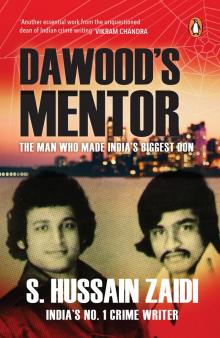 Dawood's Mentor
Dawood's Mentor HEADLEY AND I
HEADLEY AND I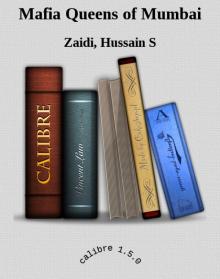 Mafia Queens of Mumbai
Mafia Queens of Mumbai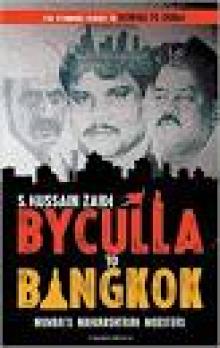 Byculla to Bangkok
Byculla to Bangkok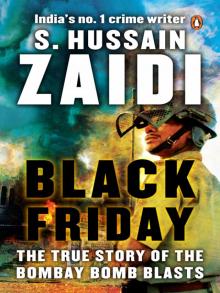 Black Friday
Black Friday The Endgame
The Endgame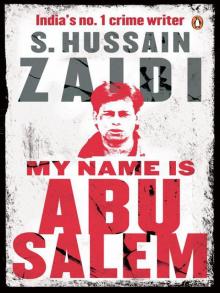 My Name is Abu Salem
My Name is Abu Salem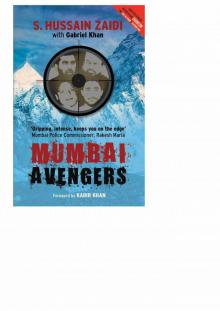 Mumbai Avengers
Mumbai Avengers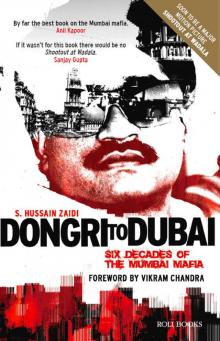 Dongri to Dubai - Six Decades of the Mumbai Mafia
Dongri to Dubai - Six Decades of the Mumbai Mafia Eleventh Hour
Eleventh Hour